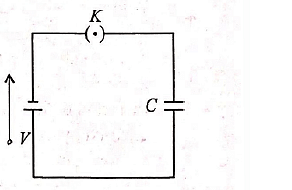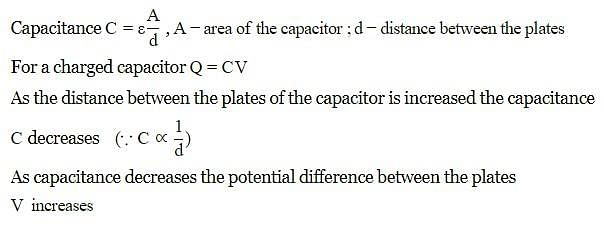Test: Capacitors and Capacitance (3 Nov) - JEE MCQ
10 Questions MCQ Test - Test: Capacitors and Capacitance (3 Nov)
In a parallel plate capacitor, the capacity increases if
The distance between the plates of a capacitor is d. What will be the new capacitance if a metal plate of thickness d/2 is introduced between the plates without touching them
| 1 Crore+ students have signed up on EduRev. Have you? Download the App |
A capacitor stores 0.24 coulombs at 10 volts. Its capacitance is
A parallel plate capacitor is connected to a battery as shown in figure. Consider two situations

(i) key KK is kept closed and plates of capacitors are moved apart using insulating handle
(ii) key KK is opened and plates of capacitors are moved apart using insulating handle
Which of the following statements is correct?
Increasing the charge on the plates of a capacitor means
A parallel plate air capacitor is charged to a potential difference of V volts. After disconnecting the charging battery the distance between the plates of the capacitor is increased using an insulating handle. As a result the potential difference between the plates
Work done in charging a capacitor is stored in it in the form of electrostatic energy, given by
What should be the radius of an isolated spherical conductor so that it has a capacity of 2μF?
Which of the following is a non polar dielectric?
Capacitor preferred when there is a high frequency in the circuits is ______



















